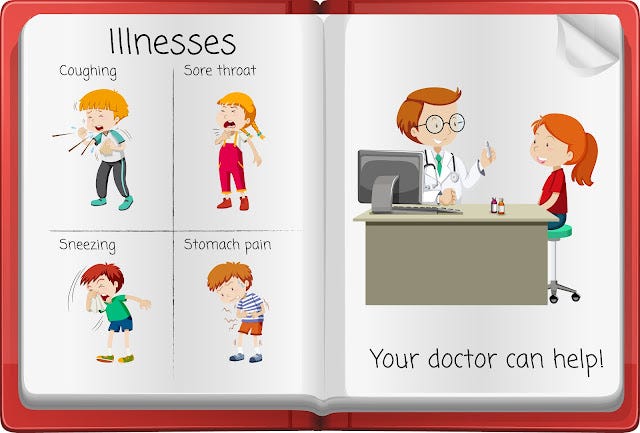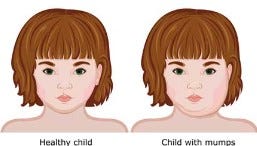Childhood Diseases List
Understanding Common Illnesses in Children

Childhood Diseases List:
- Chickenpox
- Measles
- Mumps
- Rubella
- Whooping cough
- Hand, Foot, and Mouth Disease
- Rotavirus
- Fifth Disease
- Roseola
- Scarlet Fever
- Croup
- Bronchiolitis
- Pneumonia
- Strep Throat
- Ear infections
- Conjunctivitis (Pink Eye)
- Influenza (Flu)
- Hepatitis A
- Polio
- Tetanus
As a parent or caregiver, it can be difficult to see your child fall ill. Childhood diseases are a common occurrence, and while some may be mild, others can be more serious. Understanding the different types of childhood illnesses can help you be better prepared and equipped to provide care for your child. In this article, we’ll take a closer look at the childhood diseases list, including their symptoms and treatment options.
In this article we discuss only five diseases and its treatment
- Chickenpox

Chickenpox is a highly contagious viral infection that is common in children. It is characterized by a red, itchy rash that usually begins on the face, chest, and back, and then spreads to other parts of the body. The rash eventually forms blisters, which then scab over and fall off. Other symptoms of chickenpox include fever, headache, and fatigue.

Treatment for chickenpox is mainly focused on relieving the symptoms. Over-the-counter medications like acetaminophen can be used to reduce fever and relieve pain. Children with chickenpox should also get plenty of rest and drink plenty of fluids.
www.robtex.com/dns/ecknowledge1.blogspot.com.html
Measles

Measles is a highly contagious viral infection that is characterized by a red, blotchy rash that usually begins on the face and then spreads to other parts of the body. Other symptoms of measles include fever, cough, and runny nose. In severe cases, complications such as pneumonia, encephalitis, and even death can occur.
www.builtwith.com/ecknowledge1.blogspot.com
The best way to prevent measles is through vaccination. The measles vaccine is usually given to children at 12–15 months of age and again at 4–6 years of age. There is no specific treatment for measles, but symptoms can be managed with over-the-counter medications like acetaminophen.
3 Mumps

Mumps is a viral infection that is characterized by swelling of the salivary glands, which are located near the jaw. Other symptoms of mumps include fever, headache, and muscle aches. Complications of mumps can include meningitis, deafness, and inflammation of the pancreas.
Like measles, the best way to prevent mumps is through vaccination. The mumps vaccine is usually given to children at 12–15 months of age and again at 4–6 years of age. Treatment for mumps is focused on relieving symptoms and includes bed rest, fluids, and over-the-counter medications.
4 Rubella
Rubella, also known as German measles, is a viral infection that is characterized by a rash that begins on the face and then spreads to the rest of the body. Other symptoms of rubella include fever, sore throat, and swollen glands. Rubella can be particularly dangerous for pregnant women, as it can cause birth defects in the fetus.
Like measles and mumps, the best way to prevent rubella is through vaccination. The rubella vaccine is usually given to children at 12–15 months of age and again at 4–6 years of age. There is no specific treatment for rubella, but symptoms can be managed with over-the-counter medications.
5. Whooping cough
Whooping cough, also known as pertussis, is a bacterial infection that is characterized by severe coughing fits that can last for several weeks. Other symptoms of whooping cough include runny nose, fever, and fatigue. Whooping cough can be particularly dangerous for infants, as it can lead to pneumonia, seizures, and even death.
The best way to prevent whooping cough is through vaccination. The pertussis vaccine is usually given to children at 2, 4, and 6 months of age, with booster shots given at 15–18 months and again at 4–6 years of age.
